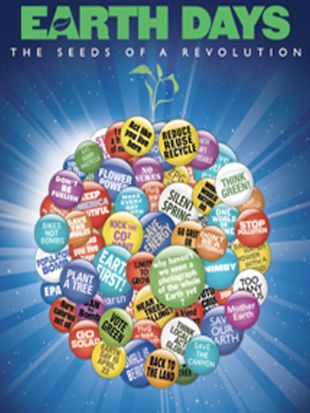Within the scope of ecopolitical history, Earth Days represents a fantastic achievement. Whereas other documentaries on the subject of the biosphere continue to build awareness about current ecological crises (often to significant and commendable emotional impact), Days directs its focus elsewhere: it ambitiously and uniquely offers a sweeping survey of the modern environmental movement as it blossomed over the second half of the 20th century, and pays homage to the men and women who stood at the vanguard.
Director Robert Stone assembles a team of nine environmentalist crusaders from all walks of life, some of whom had a direct hand in the creation of the premier Earth Day in 1970. The interviewees -- uniformly articulate, passionate, and engaging -- include ecological activist and solar energy proponent Denis Hayes, 1960s secretary of the interior Stewart Udall, astronaut Rusty Schweickart, overpopulation expert Paul Ehrlich, and many others. Stone assigns the subjects with labels ("The Organizer," "The Radical," "The Politician," etc.), a device that underscores the varying and disparate roles they played in raising ecological consciousness, tailored to their individual strengths.
Given the number of interviewees in the film, we may risk losing track of who fulfilled which role, but the subjects' testimonies quickly blend together into a cohesive yet multifaceted oral history that points in a uniform direction -- a desperate, heart-tugging need for environmental rescue in the post-WWII years, engineered by visionaries (such as Rachel Carson) who truly cared enough about the planet and the fate of its people to initially set the wheels of ecological recovery in motion. More broadly, the dialogues also create a sociological portrait of a postwar American society in a state of flux. Interviewees speak sadly about the degree to which rampant consumerism and postwar American industrialization severely damaged America's cities with smog and pollution by the mid- to late '60s, while this growing crisis hid behind a lie -- that of limitless resources. Stone pulls his most powerful and sensorially overwhelming device from these segments: the unspoken contrast between washed-out, grotesque archival footage of suburban life during the 1950s and early '60s, and the beautifully lit and framed contemporary images of unspoiled wilderness. The latter retain an almost ascetic purity and refinement at times -- as in a swirling, hypnotic view of the star-filled night sky, coupled with one interviewee's recollections of his environmental epiphany during a trip to the Namibian desert.
The film deserves a commendation for neatly and cleanly detailing society's shifting, almost contradictory attitudes toward the ecosphere. Stone demonstrates how the environmentalists themselves were not immune to strategic errors -- as when many ecologists broke off from modern society and joined the throes of the late '60s counterculture (a movement capped off with the realization that it was necessary to effect change from within the system). He also depicts the conflicting political agendas that impeded environmental progress, with footage that shows how right-wing factions alternately used environmentalism as a political ploy to score votes (Nixon) and -- on a much more heart-wrenching note, in what threatened to be the movement's undoing -- aggressively worked to dismantle the environmental and energy policies implemented by prior administrations (Reagan).
Compositionally, the film interpolates archival interviews from a plethora of sources, including local talk programs and The Tonight Show Starring Johnny Carson, and at times one wishes that Stone would linger on those interviews for longer periods of time. This represents one of the documentary's only significant flaws, and in the final analysis, it can be forgiven. The only other major lapse is that the narrative trails off with the anti-environmentalism of Reagan, and one walks away wanting to learn more about the ecological actions of his immediate successors. Accurately or not, the film leaves the distinct impression that the Carter administration represented the last great gasp of U.S. environmentalism on a political level.
As such, Earth Days represents a somewhat overdue project -- it would have felt far more appropriate and timely if released in the late 20th century, especially given the material's apocalyptic underpinnings. But the film also feels thoroughly welcome. The documentary never openly pleads with viewers to launch a new environmental crusade, but it doesn't need to -- its inherent love of the natural world and its concern about ecological abuse are evident in every frame. When the film ends, we immediately feel the need to march out and take up its cause as successors to the courageous men and women who appear onscreen.
